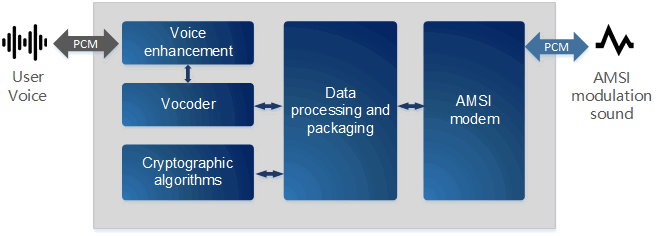What Should You Know About Digital Voice Encryption Technology?
End To End Voice Encryption secures messages before they're sent and decrypts them only after arriving at a recipient's device.
This is different from encryption-in-transit, when messages may be decrypted at the server before going to a final destination.There are several messaging apps that use end-to-end encryption, including Signal, Telegram, and WhatsApp.
There's more interest in secure and private online communication than ever. One tool used by many modern communication services is end-to-end encryption.

Digital Voice Encryption Technology
End-to-end encryption, explained
What makes End-To-End Encryption unique is that whatever you're sending is encrypted on your device and travels in encrypted form all the way to its destination. It's only decrypted there so it can be read by the recipient.
The best way to understand Digital voice encryption technology is in contrast to a more traditional system called encryption-in-transit. Typically, if a service uses encryption, it will be encrypted on your device and sent to the server. There, it is decrypted for processing, then re-encrypted and sent on to its final destination. The data is encrypted anytime it's in transit, but decrypted when it's "at rest." This protects the information through the most critical part of the trip - in transit - when it's often most vulnerable to hackers, interception, and theft.
In contrast, End-To-End Encryption is the act of applying encryption to the data on your device and not decrypting it until it reaches the destination. Even the service that is sending the data can't see the content of your message when it passes through the server.
This is important because End-To-End Encryption can give you the confidence that your communication is safe from prying eyes. In addition to simple two-way text chats, you might want to ensure that financial transactions and business communication use end-to-end encryption.
